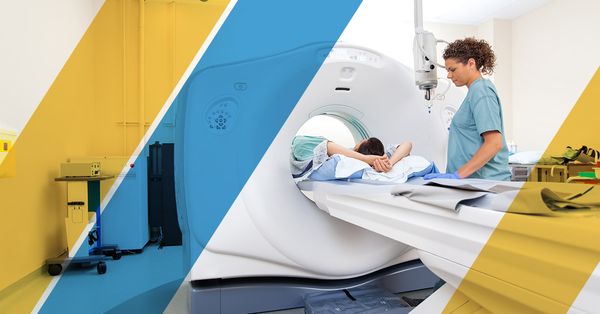Your premier North Pittsburgh Imaging Specialists are named just that. We are your Pittsburgh CT scan experts and offer the best quality services at affordable costs. As your provider of Top Rated Local ® medical imaging, we are here to be your lifelong partner in the imaging field. Many people have a basic knowledge of computed technology (CT) scans but are unfamiliar with the processes involved. Today, we’ll look into how a CT scan works and how the technology helps us provide top-quality diagnostic imaging services to the Pittsburgh area!

The Science Behind Your CT Scans
North Pittsburgh Imaging Specialists
What It Is?
CT and Computerized Axial Tomography (CAT) scans typically consist of a round-shaped machine with a space in the middle, referred to as a gantry. An easy way to remember what the gantry looks like is to imagine a donut — a highly complex, valuable donut! As many people know, the patient is instructed to lay upon a bed platform that slowly passes through the center of the donut. An x-ray source then makes its rotations around the tube, sending x-rays through the patient to the other side. This machine is useful due to its 360-degree rotation, which creates a 3D profile of the patient.
How Does It Work?
Each rotation of the x-ray source during the CT scan creates a two-dimensional image of the patient. The depth of this picture is very minute, typically measured in millimeters (usually single digits!). When the x-rays pass through the patient, it is then picked up by digital detectors on the other side. The machine will then rotate a small amount to take another scan from a new angle. This process is repeated to create a database of images that will be used as the overall profile of the patient. Based on the density and characteristics of the body, the x-rays detected will paint an accurate picture of the human body. While the denser parts of your body easily alter the x-ray’s path to create a detailed image, the softer tissues can often be harder to contrast and inspect. The differences in detail can hamper our diagnostic efforts.
How Do They Enhance CT Details?
As we have mentioned in a previous blog, contrast dye is often used to help make your softer tissues more visible. Comprised of iodine and barium compounds, this dye is effective at blocking the passage of x-rays, thus creating more detail in the 2D image. Different compounds are used for different parts of the body and useful for helping to illuminate the smaller details that our specialists may have missed otherwise.
What About That 3D Profile?
By combining all of the individual scans into one, our modern technology can create an advanced digital 3D image. This new profile can be very helpful for scanning and diagnosing any issues that may be found. These scans can also be invaluable for treatment and possible surgery plans, where the accurate roadmap can be utilized and followed for more accurate, efficient treatment.
No matter the reason for the CT or CAT scan, you depend on a top-notch imaging center to help with outpatient operations and diagnosis. For over a decade, the North Pittsburgh Imaging Specialists have been providing accurate, professional imaging services to their clients. If you’re in need of a helpful Pittsburgh CT scan specialist, we’re here to help. Don’t trust your imaging needs with just any company; contact us today to schedule an appointment!




